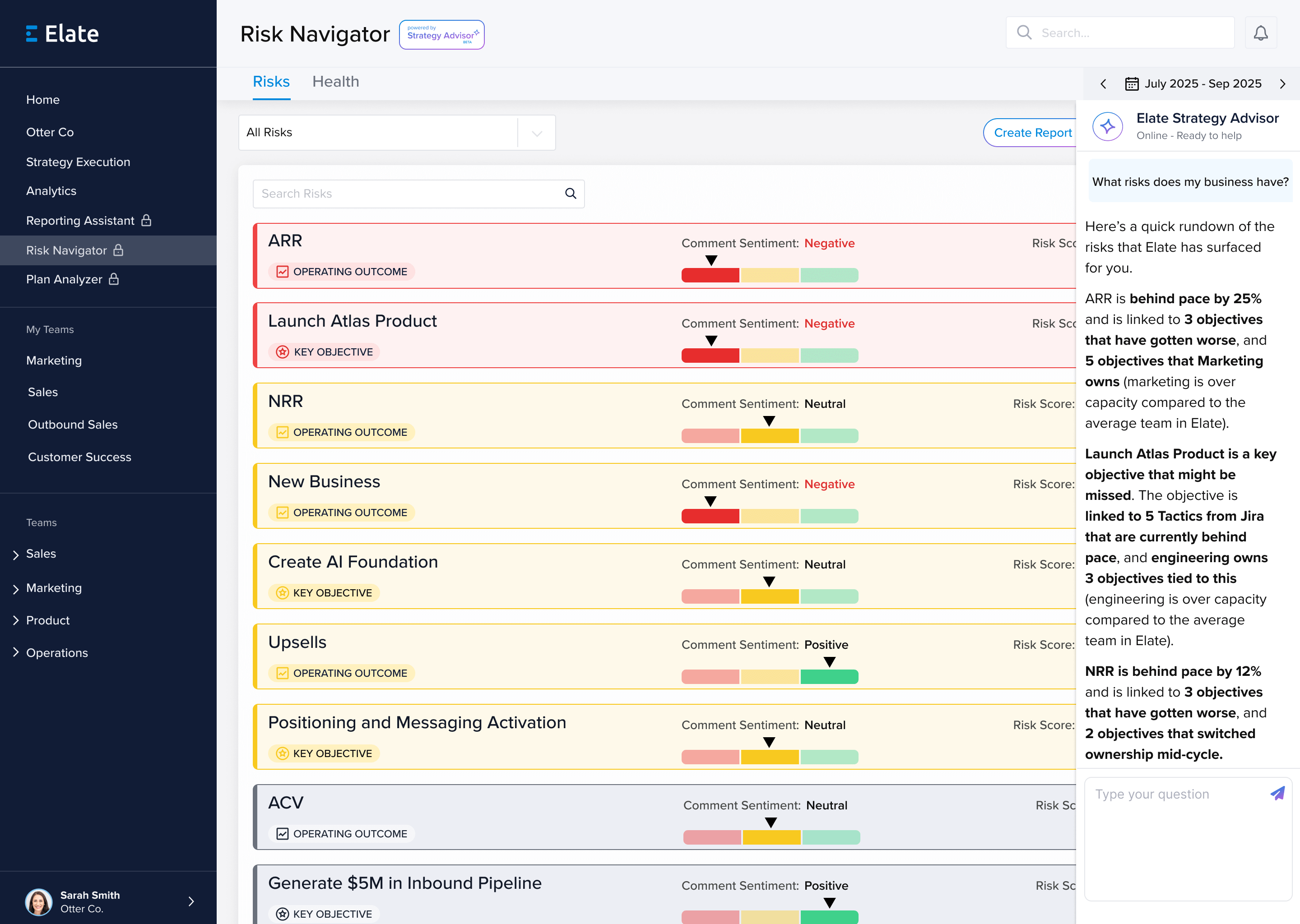There are lots of companies out there that are looking for ways to increase their growth in one of the most competitive environments ever. Even though most companies know what their overarching goals are, it is important to set intermediate goals along the way. Then, it is important to define what success will look like for these specific goals. That is where objectives and key results, usually abbreviated OKRs, are helpful. There are multiple shapes and forms that OKRs can take. For example, objectives and key results can be set on the company level. They can also be set on the individual level. Then, somewhere in between fall team level OKRs. It is important to understand how to set OKRs, how to measure OKRs, and how the OKR methodology applies to teams.
When taking a look at OKRs, a lot of people are wondering what the problem with OKRs might be. One of the biggest problems is that a lot of people do not understand how they can define success once they set OKRs. OKRs need to be measurable, attainable, and related to the overarching goals of the company. Therefore, it may be helpful to take a closer look at an example of how company OKRs, team OKRs, and individual OKRs might relate to one another.
For example, the company may have a goal to increase its recurring revenue. Then, the various teams have to set goals that will relate to them. As an example, the sales team may help a company increase recurring revenue by increasing its share of annual packages sold by 20 percent. Then, the marketing team may help reduce the initial churn by shortening the onboarding process by 10 percent. Finally, there may be an individual on the sales team who will create a new pricing structure for monthly and annual packages. Furthermore, there may be an individual of the marketing team who is responsible for creating new onboarding materials by the end of the quarter. This is an example of how company, team, and individual OKRs may relate to each other.
Team OKRs
It may be helpful to take a closer look at what team OKRs look like in various settings. Depending on the department in which someone operates, team OKR examples will look different from department to department.
First, take a look at a few product OKR examples. For example, one specific team may have the goal to increase the safety of a product by reducing the number of injuries reported by 20 percent by the end of the quarter. Or, another product OKR example could be to increase the number of products sold by 15 percent by increasing the number of qualified leads that the company uncovers.
It may be helpful to take a look at a few OKR examples for operations. For example, this specific team may have the goal to increase customer satisfaction by reducing delivery times by 12 hours. Or, this department may have a goal to increase the number of on-time deliveries by reducing the number of delays by 50 percent by the end of the quarter.
Even the customer service team can get involved with customer service OKR examples. As an example, the customer service team may have the goal to increase customer satisfaction by reducing the amount of time people spend waiting by five minutes by the end of the quarter. Or, the customer service team may want to increase customer satisfaction by reducing the amount of time it takes customers to hear back on an emailed question by 5 hours by the end of the year.
Every team has to work together in order to achieve success for the company. It is helpful to take a closer look at OKR examples for teams so that everyone can get involved. If OKRs are set properly, they can make a significant difference in the overall success level of the team.
OKR Examples For Growth
Every company is looking for ways to grow in the modern era. Therefore, it is helpful to set OKR examples for growth. For example, it may be helpful to take a closer look at business development OKR examples. Every company depends on recruiting new talent in order to maintain its current trajectory. As an example, the business may have a goal to hire 10 new graduates by the end of the quarter. Does consent the business have to grow in the future.
It is even possible to set a growth team OKR next to growth marketing OKRs. For example, the business may have a goal to recruit leads at a 10 percent faster clip by reaching out to new people using an automated email drip campaign. This is particularly helpful for those who work in the B2B industry. Or, the marketing team may want to reduce its initial churn rate by 15 percent by following up with existing customers more often. If teams are able to set efficient OKRs for growth, they'll be able to keep up with their competition. By setting objectives, definable metrics, it is possible to make sure that every team works together toward one common goal, setting the company up for success in the future.
Individual OKRs
Clearly, there are multiple levels when it comes to objectives and key results. There are objectives and key results that operate at the company level as well as examples that operate at the team level. Then, as we proceed down further, there are individual OKRs that relate directly to individual objectives. When taking a look at individual OKRs Google, it is important to make sure that professional development OKR examples are closely related to the individual goals of the team.
For example, if someone is a member of the marketing team, and the marketing team would like to reduce the initial turn rate, then an individual may want to set a goal to produce new marketing onboarding materials by the end of the month. Then, another member of the marketing team may want to have an individual goal to conduct efficient A/B testing on those new materials by the end of the quarter. These individual goals closely relate to team goals as well.
There are also OKR examples for personal growth. For example, one member of the team may have an individual goal to reduce procrastination by replying to all emails received by noon during the next day. Another member of the team may want to improve work-life balance by striving to leave the office by 5 PM every day this week. These personal goals can go a long way toward improving the team.
How To Present OKRs
Clearly, OKRs can play a major role in helping companies grow in the modern era. On the other hand, they are only going to be effective if everyone on the team buys into them. That is why it is important to take a closer look at how to present OKRs. During an OKR presentation, it is important to make sure that everyone is involved. If the individual members of the company see that people at higher levels of the company are also buying into OKRs, they are more likely to participate as well.
Therefore, it is important to take a closer look at how an OKR for quality can improve the ability to present objectives and key results effectively. For example, a lot of teams like to use an OKR template for Google Sheets. This can be a great starting place; however, in order for teams to get the most out of this presentation, they need to use a software platform that has been specifically designed for this purpose.
That is where Elate can be helpful. Elate is a solution that has been specifically designed to help people at all levels get the most out of their objectives and key results. This is a comprehensive, intuitive solution that will provide users of access to convenient templates that can be tailored to meet the needs of each individual department. Then, it is possible to use Elate to quickly and efficiently present objectives and key results to everyone at the company. Presenting OKRs in an efficient format will make it easier for the company to convince everyone to buy in. Then, the company can get the most out of this arrangement.
Company OKR Examples
Today, there are plenty of company OKR examples that have been successful. Where exactly did the idea for objectives and key results come from? It actually came from Google. Google was the first company to put objectives and key results to work. In the modern era, everyone has followed the OKR Google trend, putting them to work for their own companies. At first, real OKR examples were adopted at numerous companies throughout Silicon Valley. Eventually, OKRs expanded to just about every industry, where they have proven successful today.
Google used OKR examples to help the company grow from just a few dozen employees to the technological giant it is today. Because a lot of Google's original members have gone on to work for other companies spread throughout the area, they took their objectives and key results with them. They have been able to successfully Implement them at other companies as well.
Companies can follow Google's example. Then, they can set real examples of objectives and key results at the team level. If individuals are able to set their own OKRs in alignment with the team, the company will be placed in a good position moving forward. All companies should rely on an easy, intuitive solution to help them get the most out of OKRs.











